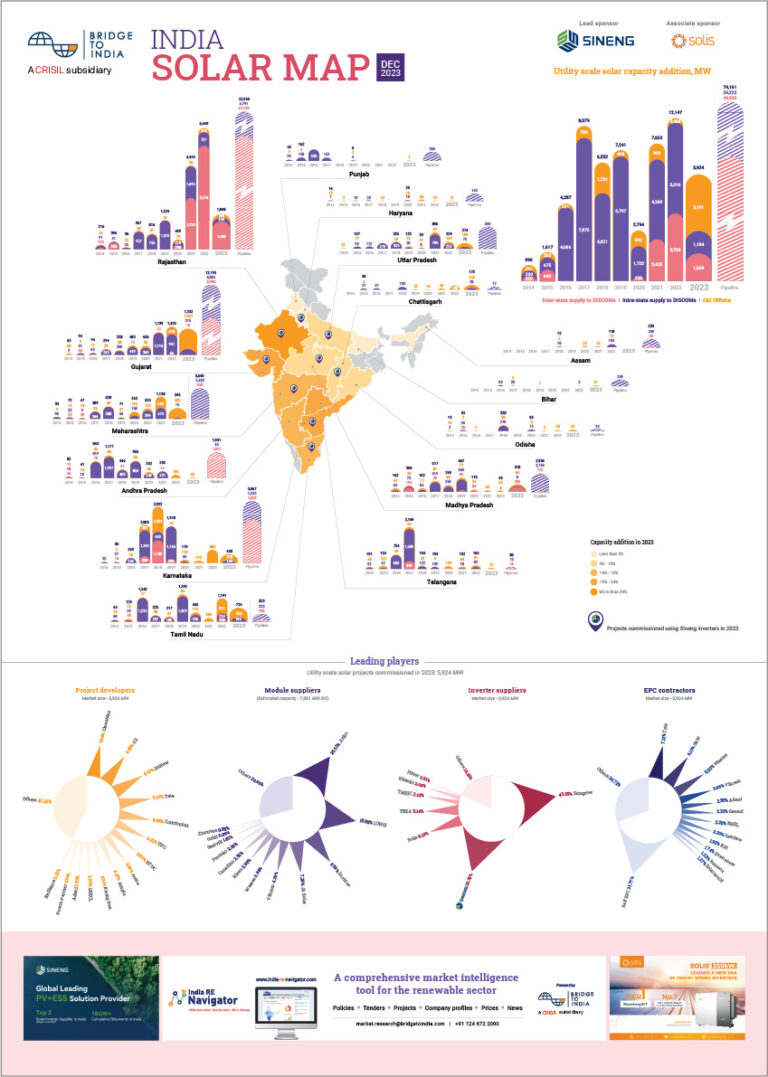Tamil Nadu today opened the financial bids received for allocations under its state policy. The state had received a subdued response with bids totaling 499MW for a tender of 1,000MW (refer to our earlier blog post to read more). Initial reports suggest that financial bids have been opened for 493MW and the lowest bid has touched INR 5.97/kWh (for a 10MW project by Mohan Breweries).
- The lowest bid has touched INR 5.97/kWh, the average bid is just over INR 8/kWh
- The options for determination and negotiation of tariffs are still open.
- Large parts of the state are reeling under severe power cuts and solar is the only source of power that can help the state meet its peak power needs in a short duration of time.
Tamil Nadu has thus seen the lowest tariffs in the country, primarily owing to the provision for a 5% annual escalation for 10 years in tariff. However, the average bid was just over INR 8 kWh and some prominent bidders such as Welspun (INR 8.56/kWh) and Lanco (INR 8.2/kWh) were significantly higher than the current norm in the country (around INR 7-7.5 kW/h).
BRIDGE TO INDIA had earlier estimated that the lowest tariff in Tamil Nadu could touch INR 6.2/kWh (refer). This tariff was based on very aggressive assumptions with an expected IRR of 12%. While some industry experts communicated to us that this estimate was unrealistically low, we were surprised to see that the lowest tariff is even lower than that. A more realistic tariff with a 5% escalation for the first 10 years that should be acceptable to developers, the state and the lenders is likely to be around INR 6.8/kWh.
The state had planned for a mechanism under which it would ask all bidders to meet the lowest bid (L1). However, due to the subdued interest and complications involved in negotiating such a price with the developers, first signs are emerging that the Tamil Nadu Power Generation and Distribution Corporation Ltd. (TANGEDCO) is willing to consider other options such as taking a median tariff for all projects. The options for determination and negotiation of tariffs are still open.
However, even if the final tariffs are acceptable to developers, we expected ongoing challenges. The revolving line of credit that promises to be a guarantee of payment to developers is unlikely to help them in raising non-recourse debt. One clause in the agreement implies that the government will have the right to make amendments in the policy and guidelines of the agreement from time to time. Such a clause places the developer in a position that is not protected from policy or governance changes. Another clause states that the Power Purchase Agreement is subject to approval from the Tamil Nadu Electricity Regulatory Commission. The time required to obtain such approval from the TNERC is not known and may create delays.
BRIDGE TO INDIA believes that if the PPA does not get TNERC’s approval in time, developers will face difficulties in achieving financial closure. This will further strain the already stringent eight-month commissioning deadline.
The state must, however, be commended on taking an initiative to promote solar power in spite of its financial problems. Large parts of the state are reeling under severe power cuts and solar is the only source of power that can help the state meet its peak power needs in a short duration of time. If Tamil Nadu is able to take all steps necessary to help the allocated capacity of 493MW to come up, it will still be a more than respectable target achievement.
Read our Tamil Nadu Solar Policy Brief for more.
Jasmeet Khurana works on project performance benchmarking, success factors for module sales, financing and bankability of projects in India.
What are your thoughts? Leave a comment below.












